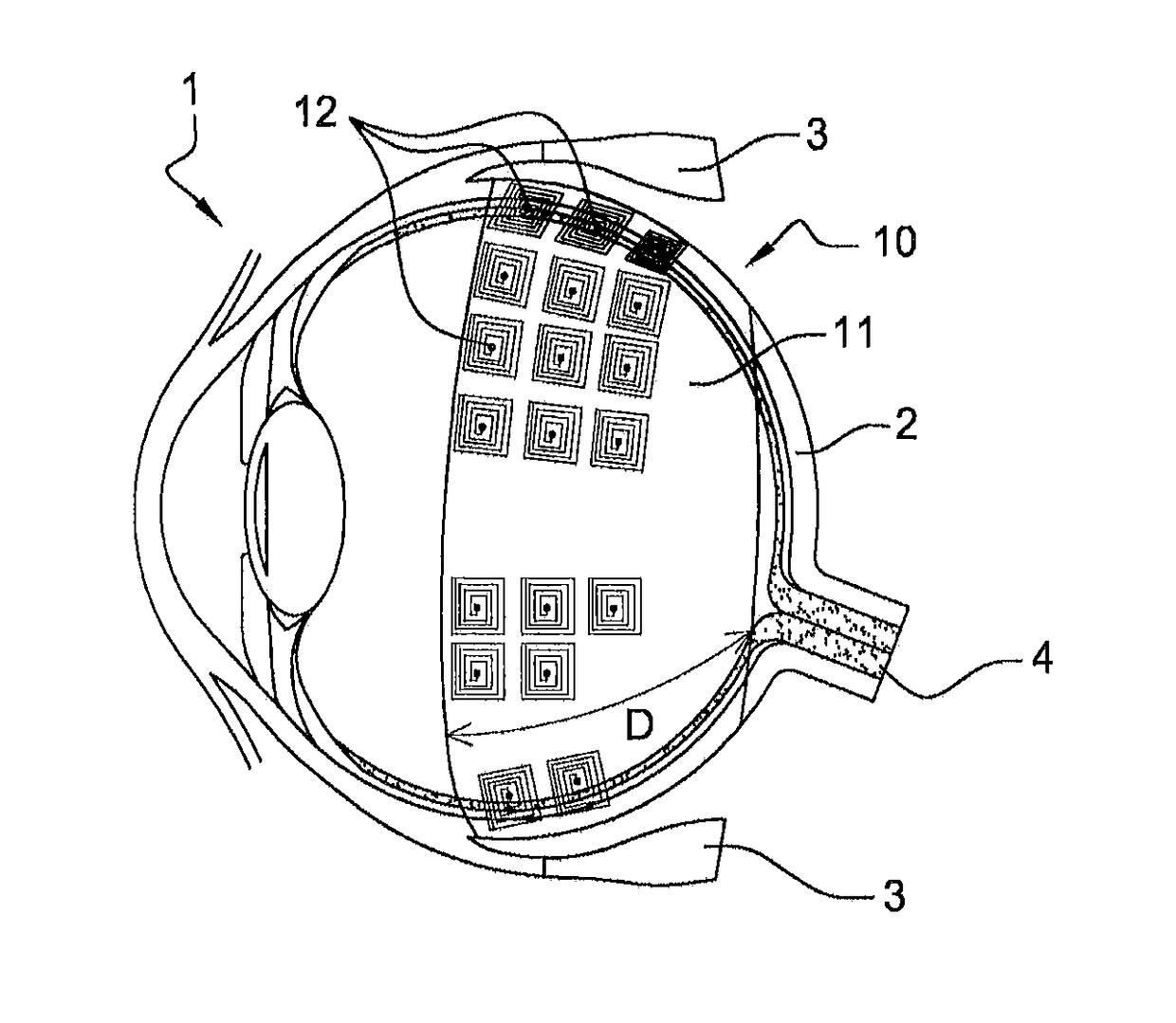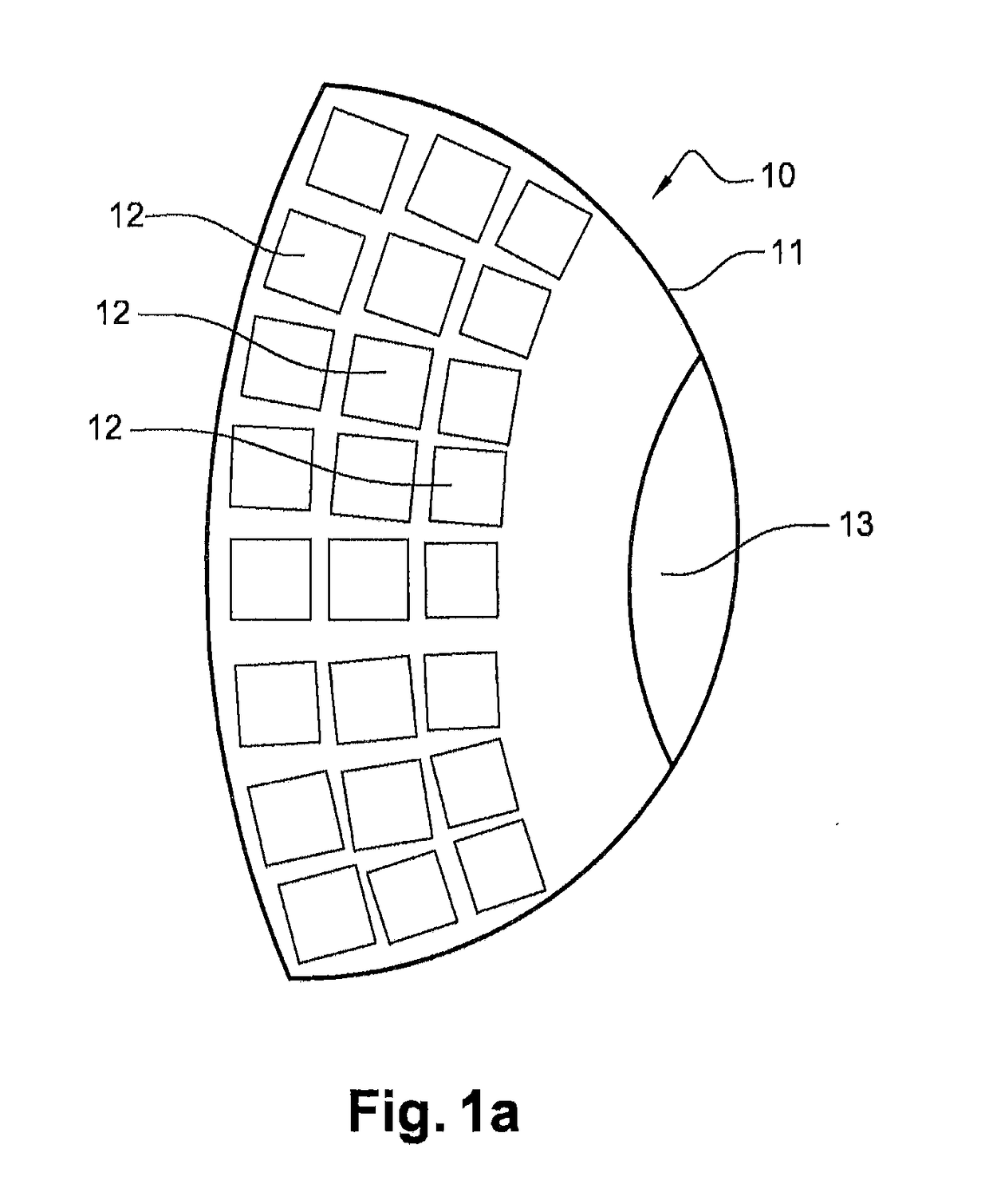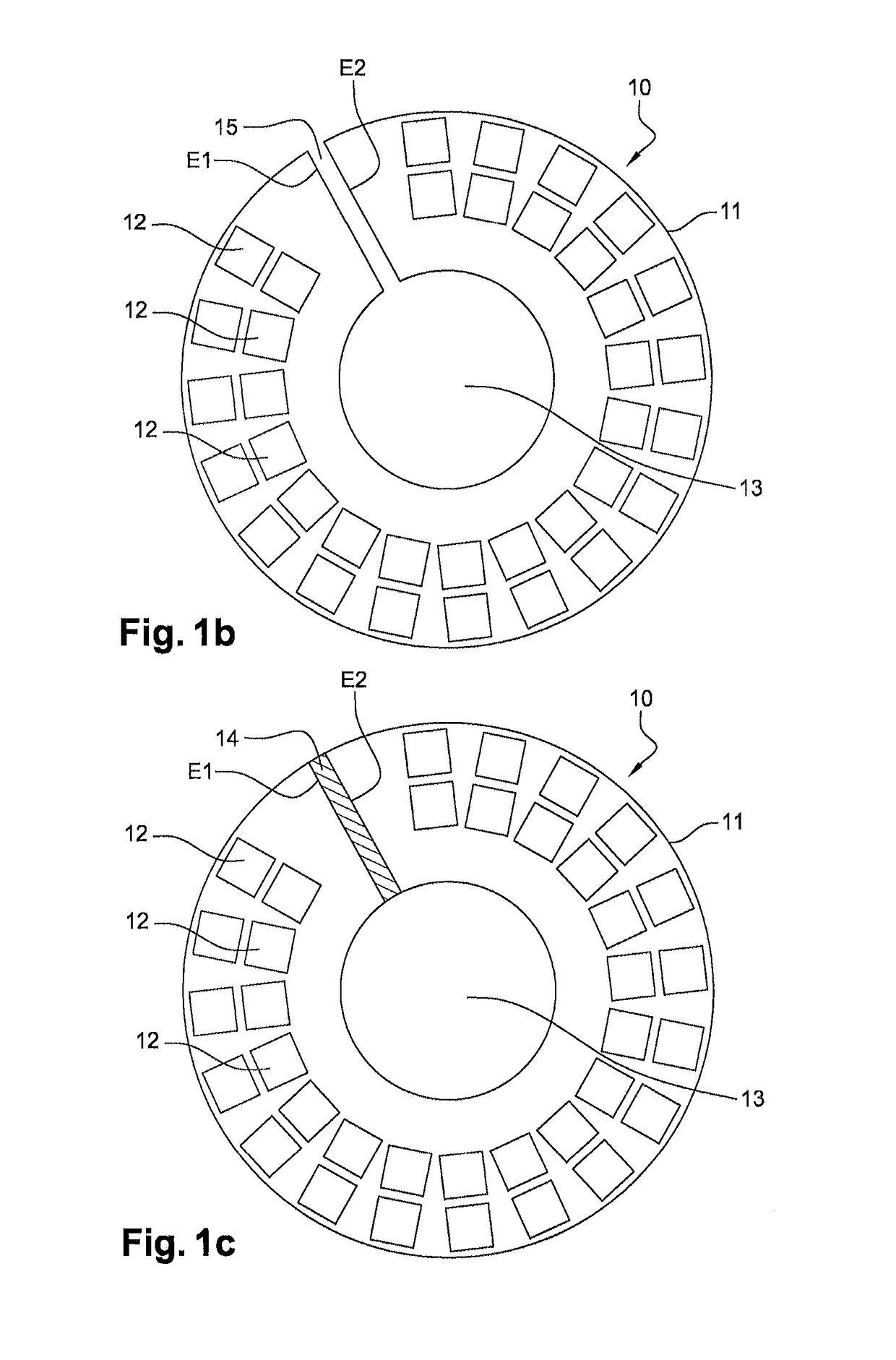Device and method for prosthetic rehabilitation of the retina
a retinal prosthesis and retinal technology, applied in the field of retinal prosthetic rehabilitation, can solve the problems of limited spatial selectivity of excitation and excitation efficiency, slow response and recovery time, and inability to fully realize the effect of the retinal prosthesis, so as to ensure the independence of each inducer
- Summary
- Abstract
- Description
- Claims
- Application Information
AI Technical Summary
Benefits of technology
Problems solved by technology
Method used
Image
Examples
first embodiment
[0053]The device 10 for prosthetic vision rehabilitation according to the invention comprises:[0054]a scleral explant 11 with a shape that is suitable for being in contact with at least one portion of the sclera of an eye, and[0055]a plurality of inducers 12 arranged on the sclera explant 11.
[0056]The sclera is a protective membrane of the eye. According to the first embodiment of the invention, the sclera explant 11 advantageously comprises an opening 13. The opening 13 is dimensioned to enable the passage of an optic nerve. The sclera explant 11 is thus suitable for being in contact with at least one portion of the sclera of an eye, the optic nerve of the eye passing through the opening 13. According to the first embodiment of the invention, the scleral explant 11 advantageously comprises a slit 15, or cut, made between the outer periphery of the scleral explant 11 and the opening 13 of the scleral explant 11. The slit 15 defines a first end E1 and a second end E2 of the scleral e...
second embodiment
[0087]The dvice 20 for prosthetic vision rehabilitation according to the invention comprises:[0088]a scleral explant or lens with scleral support or scleral lens 21, with a shape that is suitable for being in contact with at least one portion of the sclera of an eye, and[0089]a plurality of inducers 12 arranged on the scleral explant 21.
[0090]According to the second embodiment of the invention, the scleral explant 21 is suitable for being deposited in front of the eye, according to a mode of extra-ocular insertion not necessitating any surgical act. The inducers 12 are arranged on the periphery of the scleral explant 21 and are intended to act on ganglionic neurons on the outer periphery of the retina.
[0091]In the particular example illustrated in FIGS. 8a and 8b, the sclera explant 21 thus has a lens shape, the curvature of which is adapted to the natural curvature of the eye, and which may be deposited on the sclera surrounding the cornea. In an analogous manner to the scleral exp...
PUM
 Login to View More
Login to View More Abstract
Description
Claims
Application Information
 Login to View More
Login to View More - R&D
- Intellectual Property
- Life Sciences
- Materials
- Tech Scout
- Unparalleled Data Quality
- Higher Quality Content
- 60% Fewer Hallucinations
Browse by: Latest US Patents, China's latest patents, Technical Efficacy Thesaurus, Application Domain, Technology Topic, Popular Technical Reports.
© 2025 PatSnap. All rights reserved.Legal|Privacy policy|Modern Slavery Act Transparency Statement|Sitemap|About US| Contact US: help@patsnap.com



